Impossibly Proportioned Pants
Jean shopping is probably everyone’s least favorite kind of shopping. Jeans are a fashion staple and perfect for loads of occasions, but it’s not easy to find the right pair. If a pair fits your waist it mightn’t fit your hips, and if they fit your leg, they might not sit well on your butt.
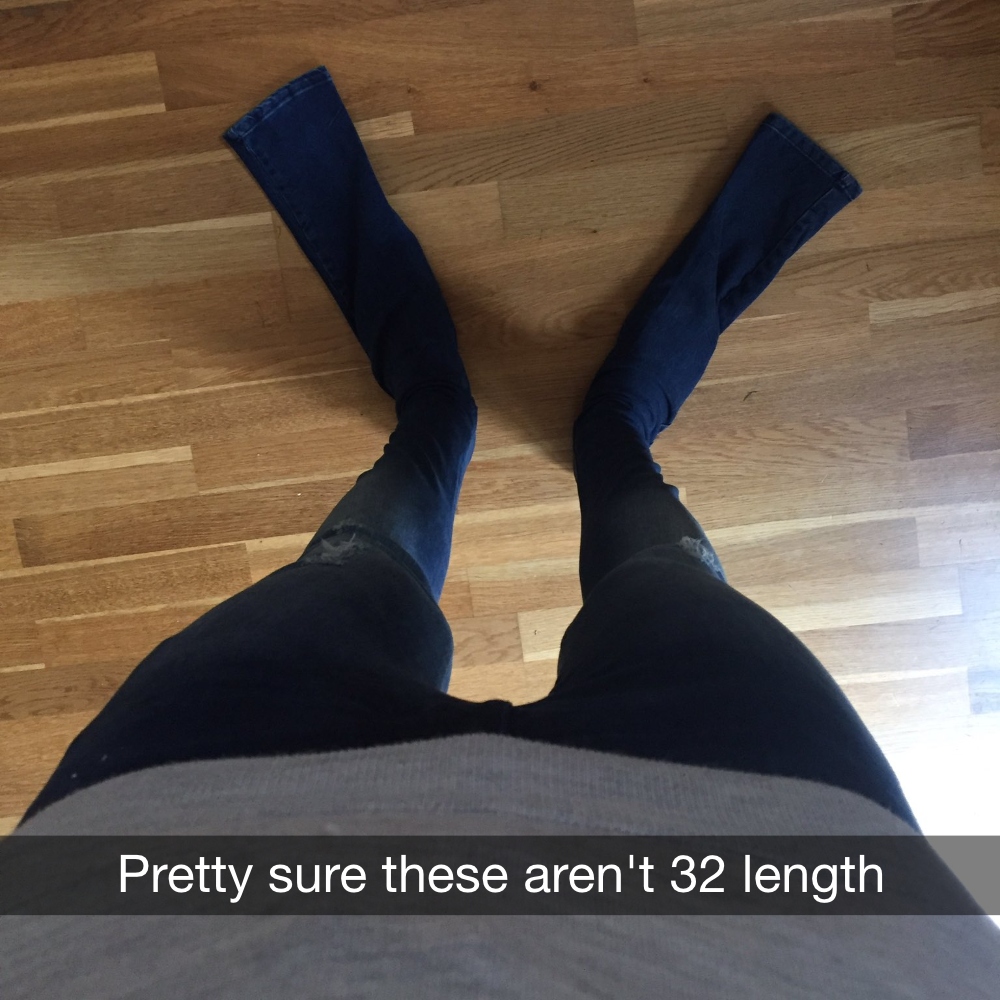
These jeans were advertised as being 32 inches long. Unless this person has incredibly long legs, it looks like that can’t be the case.
Somebody Figure This Out
You would think that clothing sizes would be standardized in some way. You know — everything labeled a size eight would have to have the same dimensions. That way, when you’re trying to find clothing that fits, you would know where to begin.
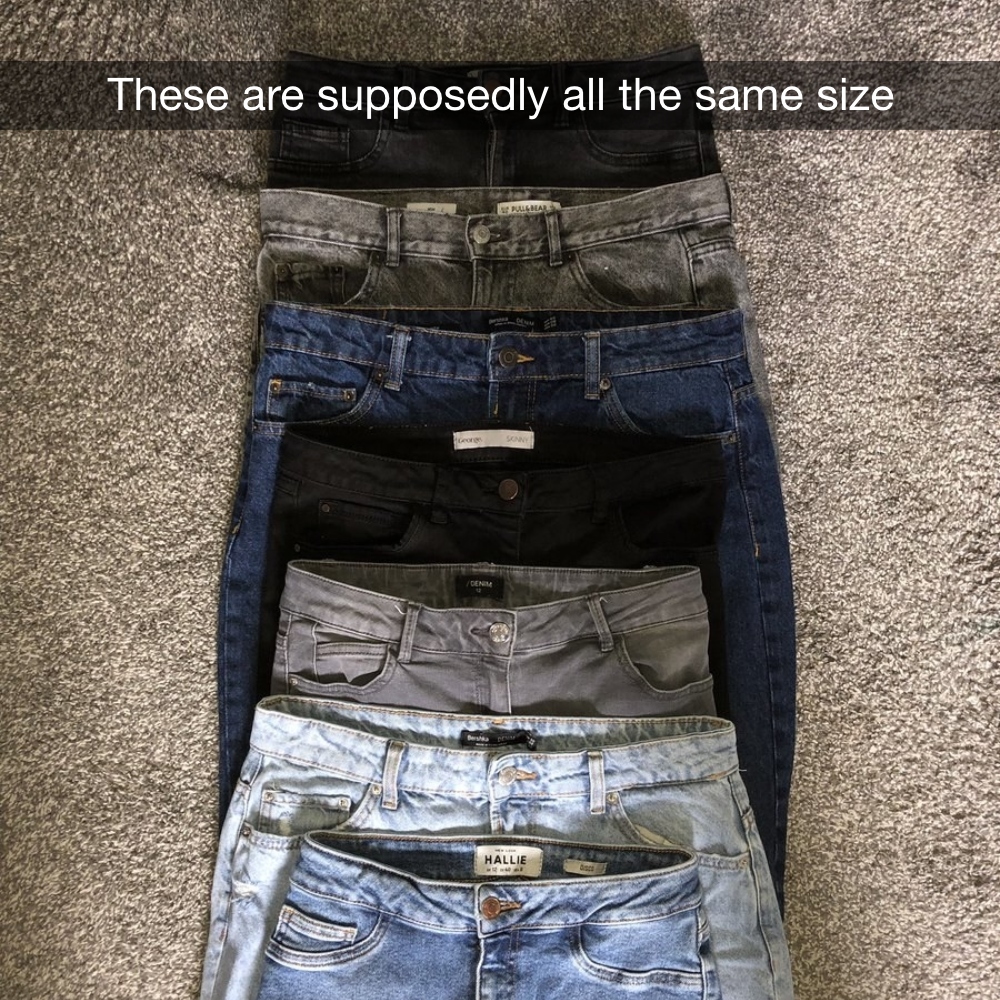
In reality, clothing stores just make up what their sizes mean. A size eight in one store could be a size 14 in another. This picture shows several pairs of jeans that are all supposed to be the same size. Outrageous!
Is Anyone Else Cold?
Ripped jeans have been in fashion for decades now. While they were once associated with farmworkers, distressed denim is now a trendy look for just about anyone. The only problem is, when jeans are ripped, they keep on ripping.
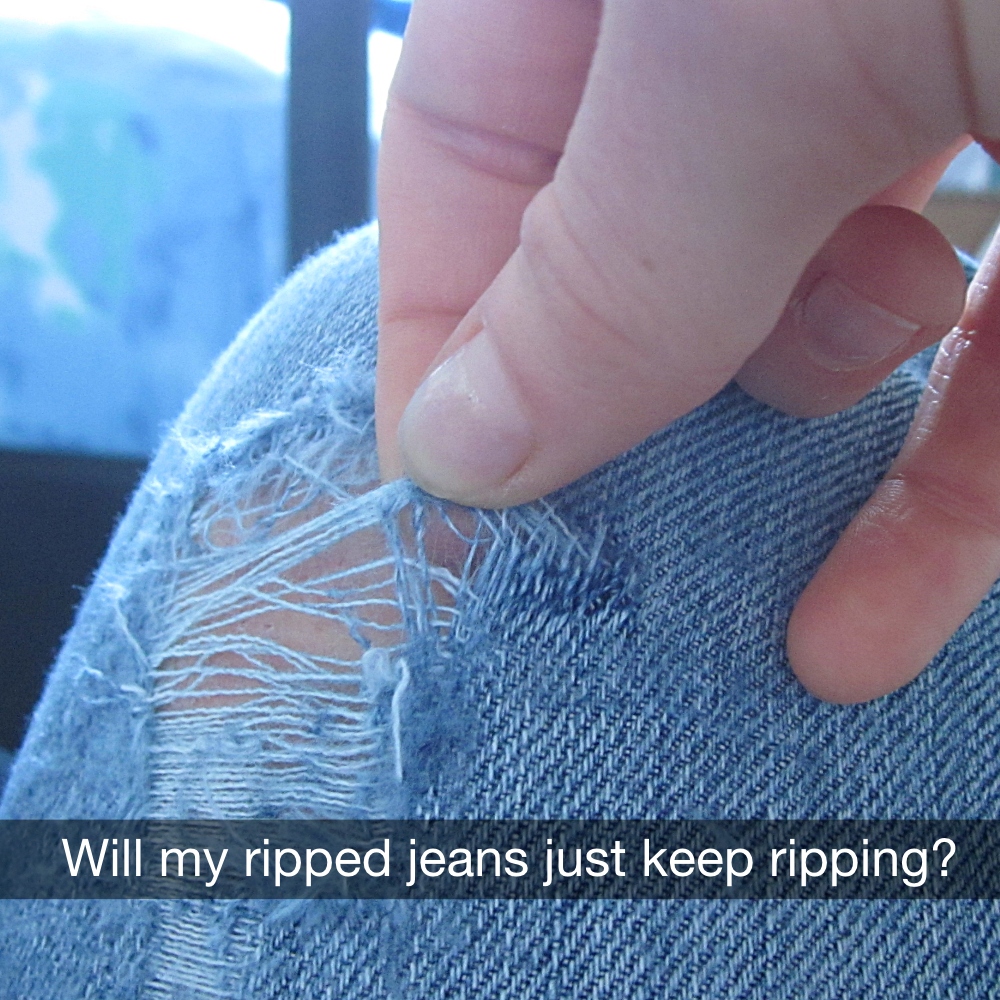
Some ripped jeans are designed so they don’t pull anymore, but others are like a constantly unraveling ball of string. One minute we look great in our jeans, and the next we feel too exposed because our skin is showing!
Strapless Slip Ups
Ugh, how annoying is the way strapless tops slip down? Though tops, dresses and rompers without sleeves look great, they don’t always stay up. This tends to be based on the shape of people’s bodies, and the fabric used. Those with a larger chest can usually keep their tops up, while others are constantly tugging at theirs.
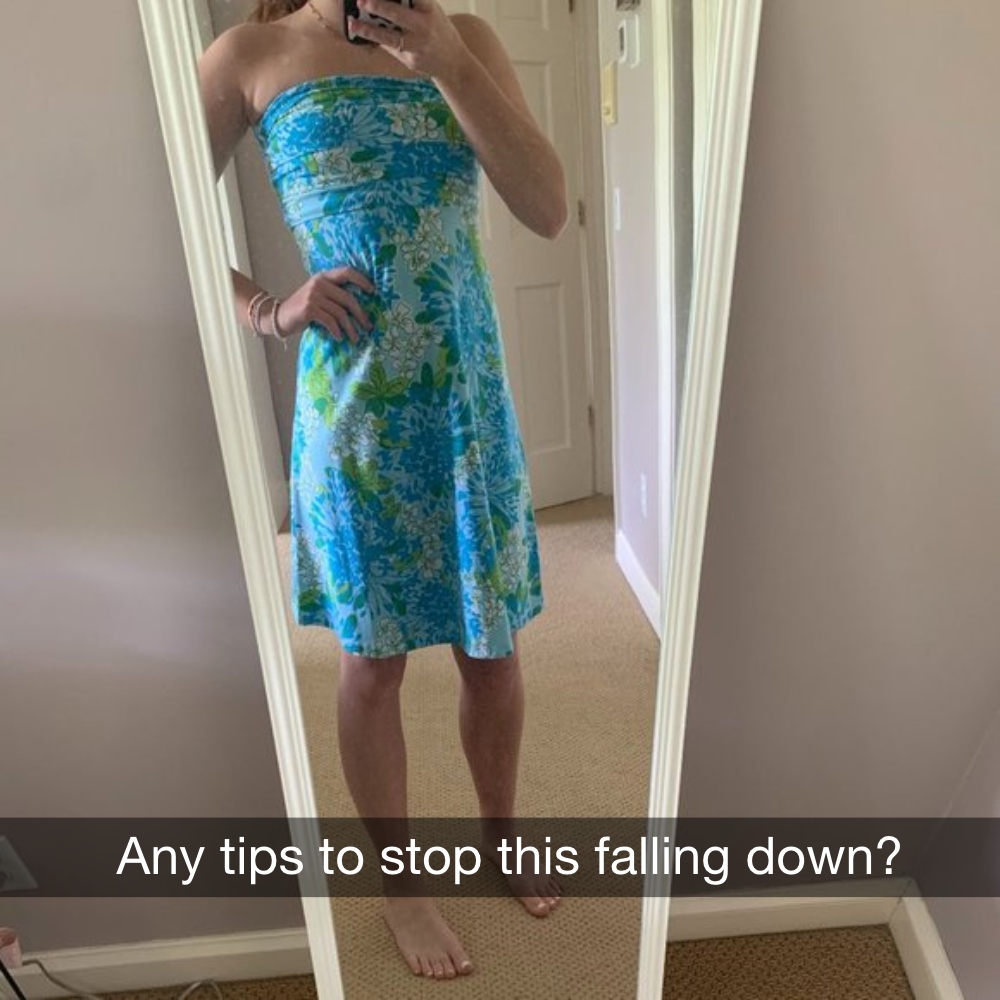
Apparently, the best way to deal with this common clothing issue is with a little bit of double-sided fashion tape. This way you can make sure your neckline isn’t going anywhere.
Remember to Stay Standing
People have since noticed that Princess Diana’s iconic ’80s wedding dress was rather wrinkled. This was because the Princess of Wales was stuffed into a carriage with her dress crinkled around her. Alas, the look was a hit anyway.
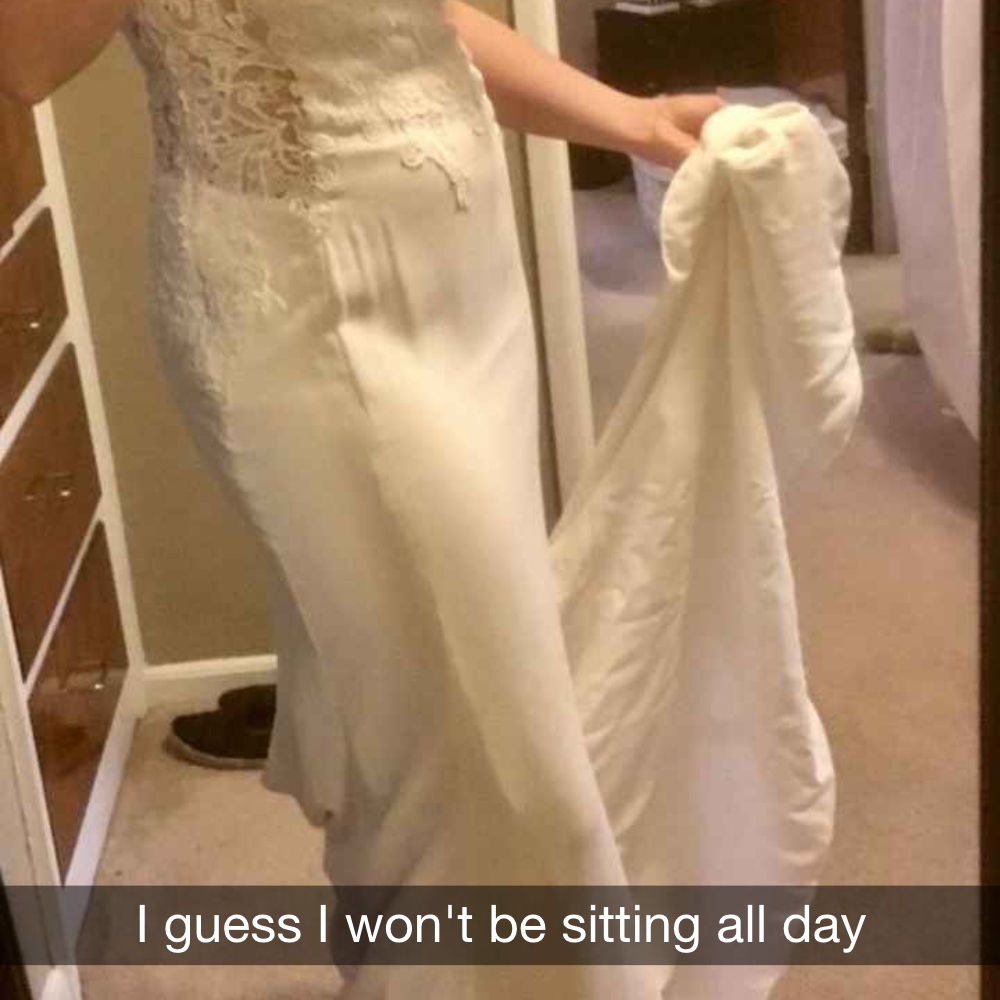
This person has a similar issue. Their wedding gown is made from crepe which quickly creases. If this bride wants to keep her dress looking ironed, she’ll need to stay upright all day long. Hopefully somebody brought a portable iron.
Planning for a Polo Neck
Surprisingly, though polo necks and turtle necks were the staples of moms in the ’90s, they’re now back in style. It’s important to remember to put your polo neck on first so as not to destroy your hair and makeup.

You see, if you spend ages perfecting your contour and then pull a polo neck on top, your makeup will rub off onto it. Likewise, if you finally get your hair sitting in place, then put on your tight necked sweater, it’s not going to last!
Explain Yourself Right Now
Women have complained about this particular clothing problem for years now. And why would we stop? We deserve pockets! Basically, while men’s clothing has pockets, women’s clothing usually doesn’t. Instead, women get fake pockets just for decoration. Typical, right? These fake pockets often have real zippers or buttons, giving us false hope.

When women do get pockets, they tend to be shallower and smaller than the men’s equivalent. Don’t designers know that women also need to shove things in their back pockets? Sometimes purses aren’t enough!
Baggy Knees All Round
Now, this problem really grinds our gears. When we get a wonderful new pair of sweatpants, leggings, or jeans, we quickly notice the silhouette changing. You see, soft cozy sweats change shape when your knee repeatedly moves in them, creating space around the knee area.

This results in the appearance of baggy knees, with big loose swathes of material around the knee. Presumably because of the fabric used, some pants become totally unwearable once this happens.
When White Goes Yellow
There are numerous ways to destroy a white item of clothing. This is so true that lots of people just don’t bother buying or wearing white because they know they won’t be able to keep it clean. However, even the people that do wear white can end up with yellow armpit stains.

This is supposedly caused by body salts or storing clothing wrongly. While chlorine bleach would remove the stain, it can also go yellow if used too much.
Not So Simple
Overalls, rompers, and jumpsuits are usually sold as practical items of clothing. After all, they’re a top and pants in one so you don’t need to pick a matching outfit when you wear them. Plus, they look laidback and casual, so they’re perfect for working at home or lounging around.

The thing is, the idea that these items are practical is false. Any woman that’s worn dungarees and then tried to use the bathroom in a rush knows that. Plus, it’s freezing to strip every time!
Dangerous Denim Transfer
When you buy a pair of dark jeans, the labels usually warns you about the dye. You see, these jeans could slightly change color after being washed, or they could rub off onto other items. That’s just what’s happened here.
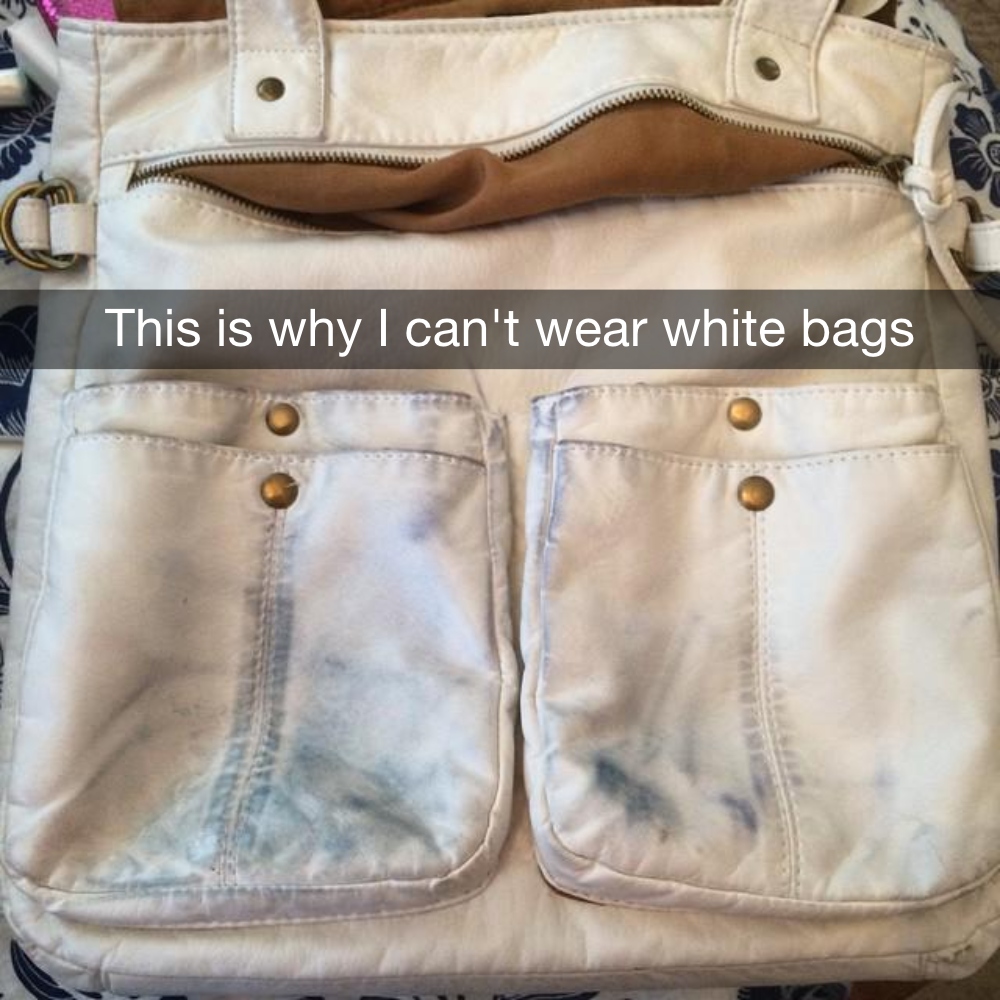
This person has paired a light colored purse with indigo denim jeans and suffered the consequences. All the rubbing between the two items has caused the denim dye to ruin the white purse. Time to buy a navy one!
Get Me Out of Here
Lots of people share bedrooms as kids, or when they live at home. This can have its ups and downs. While some people love the company of a sibling in their space, others wish they could just get some peace and quiet.

This person shares a closet with two of their siblings and they’re clearly very messy. This picture shows a hanging rail of clothing and a pretty impressive floordrobe (wardrobe on the floor) but none of it actually belongs to this person. Our condolences.
Heel-Deep in Grass
Though high heels are undeniably not as comfortable as flats, plenty of people wear them anyway. Stilettos, pumps, and towering sandals are difficult enough to walk in on solid ground — but even worse on grass, cobblestones, or pebbles. With each step the wearer risks breaking an ankle, or getting wedged in the ground.

Thankfully, the world has finally caught up with this problem. Now, you can buy stoppers that go over the heel and prevent it from sliding into the mud.
Lovely Lattice Sunburn
At the moment, the biggest trend in swimwear is cutouts. In fact, Kylie Jenner’s upcoming swimwear collection is rumored to have tons of them. This trend is pretty limiting, as most people aren’t comfortable with large sections of skin exposed. It’s a trend that’s most popular amongst influencers.

This picture shows another problem with cutout swimwear. This person donned a lace-up bathing suit and ended up with some lattice shaped burns on her chest. Now, that’s even worse than a tan line.
I Swear I Didn’t Shoplift
Lots of stores put tags on their clothing to stop people from shoplifting. Some of these are electronic and send off the store’s alarms. Others spill ink on the item so the thief can’t use or resell what they’ve taken. All of this makes sense when it comes to shoplifting.

The problem arises when employees forget to remove these tags from actual customers. This means shoppers get home to wear their new item and discover it’s unwearable. Not fair!
When Hemlines Keep Rising
We’ve seen the constantly slipping strapless top, and this is the inverse problem. People that wear bodycon dresses or skirts know that their hemline isn’t likely to stay in place. Rather, every time you take a step, your dress will shimmy upwards, making it look shorter and shorter.

It’s not a great look to walk around constantly tugging at your hemline. In fact, it makes people think that you’re uncomfortable with the length of your own skirt.
We’ll Do Without
Here’s something that should be banned from clothing — those weird loops inside every single thing we own. These little looped ribbons are to help hang clothing up. You put the loops around the center of a hanger and that makes sure the item won’t fall off. This is more of a thing in stores than in people’s homes.
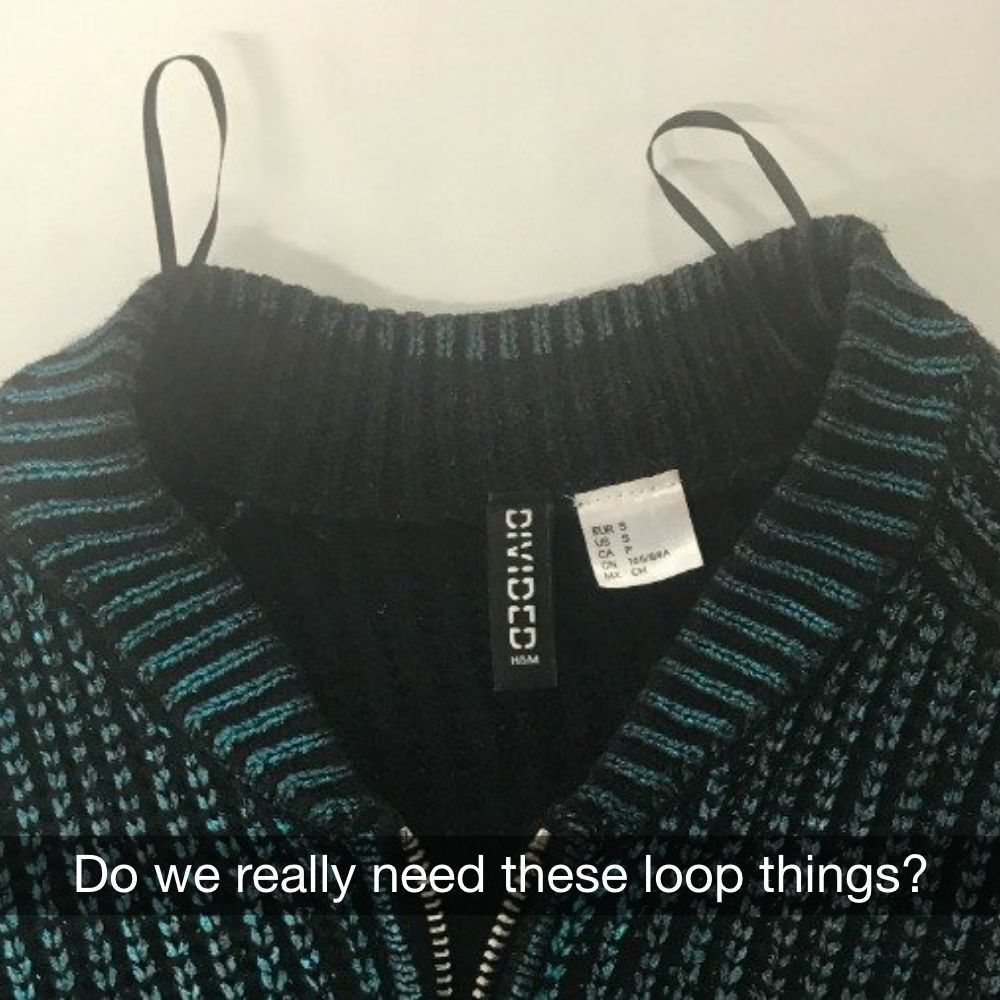
Generally, people only encounter these ribbon loops when they’re hanging out of their neckline or armpit. Can we just stop making them already?
And So It Begins
Fans of knitwear know how crushing it is to end up with a bally sweater. This phenomenon is known by several names, with some calling it “pilling” and “pill balls.” Basically, it’s when your sweaters become covered in tiny little balls that you can’t help but pick off.
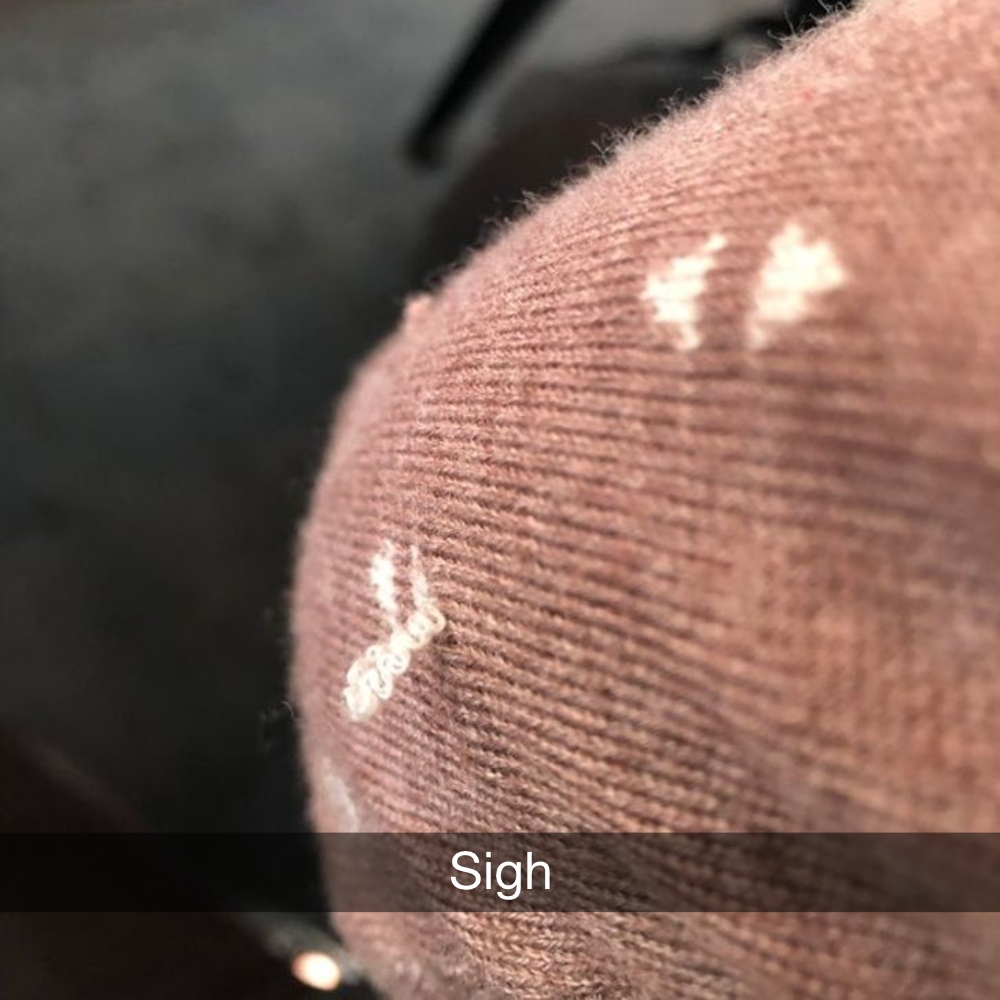
There are ways to resolve this issue without just throwing the clothing away. You can carefully shave the pills with a razor, or lay the garment on a flat surface and use a pumice stone.
Stuck Inside Something New
We’ve already discussed the potential problems of polo necks, but about regular necks? For some reason, some companies make ridiculously small neck holes that are very difficult to get into. This person tried to put on their new Pretty Little Thing top and instead got trapped inside. Seriously, that neck hole looks tiny.

This clothing problem is even worse when it happens in a changing room. No-one wants to be sweaty and stuck in something that won’t come off!
We’re Breaking Free
Many people spend years trying to find the perfect pair of jeans or leggings. You want to silhouette to be right, the fabric to be comfy, and the design to be wearable. Usually, once you find them, you wear them over and over and over again.

This repeated wear leads to holes like this one. We can’t tell you how many times we’ve seen this exact hole caused by thigh friction. In some corners, this is affectionately referred to as “chub rub.”
These Are Your Only Options
In general, it seems like clothing is made for people that don’t really exist. While it’s designed for and initially worn by models, fashion then trickles down to ordinary people. And ordinary people have ordinary bodies!
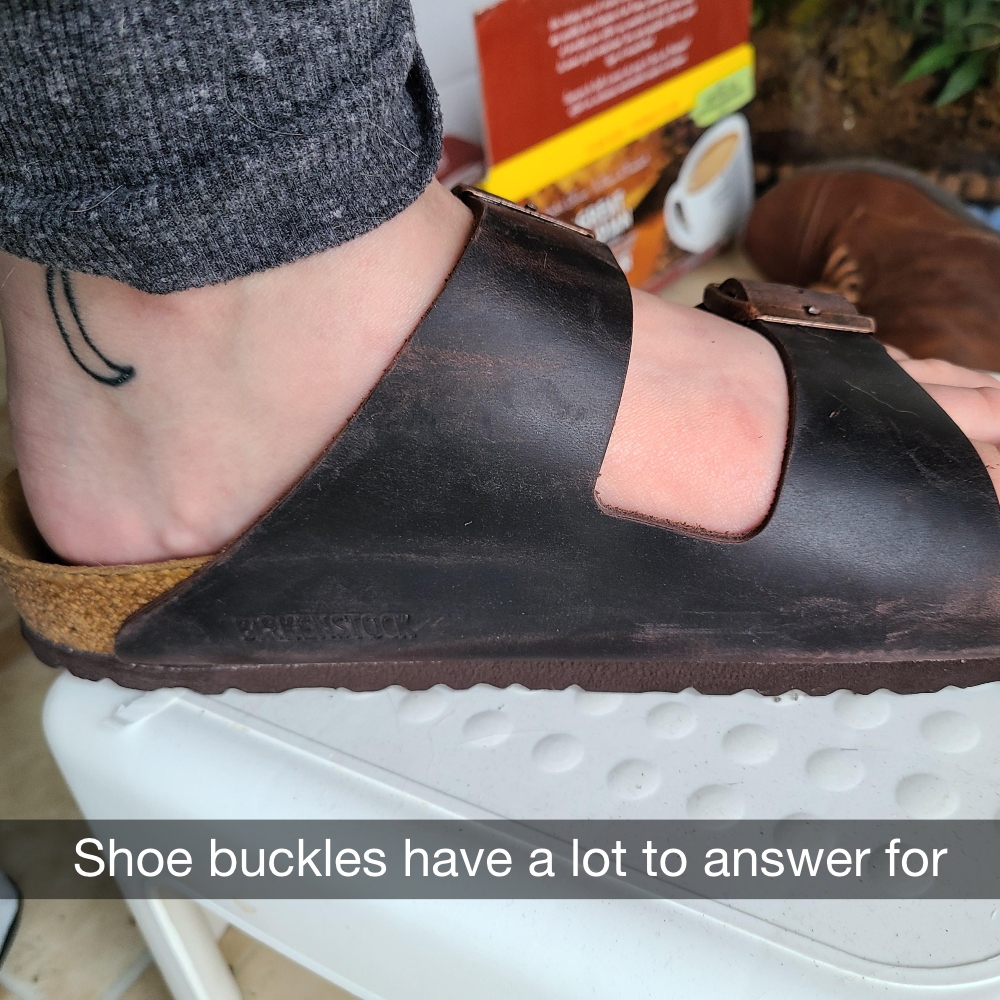
Belts and shoe straps usually have one set of pre-made holes that bear no relation to actual human bodies. This means that if you have narrow feet, tough luck! A thick waist? Not for you! These items are made for imaginary people with imaginary proportions.
Catch a Falling Bra Strap
This clothing problem should have died out by now, but alas, it’s still here. In years gone by it was seen as trashy to have a bra strap showing, but now it’s fairly normal. However, having one strap hanging down is still seen as sloppy.
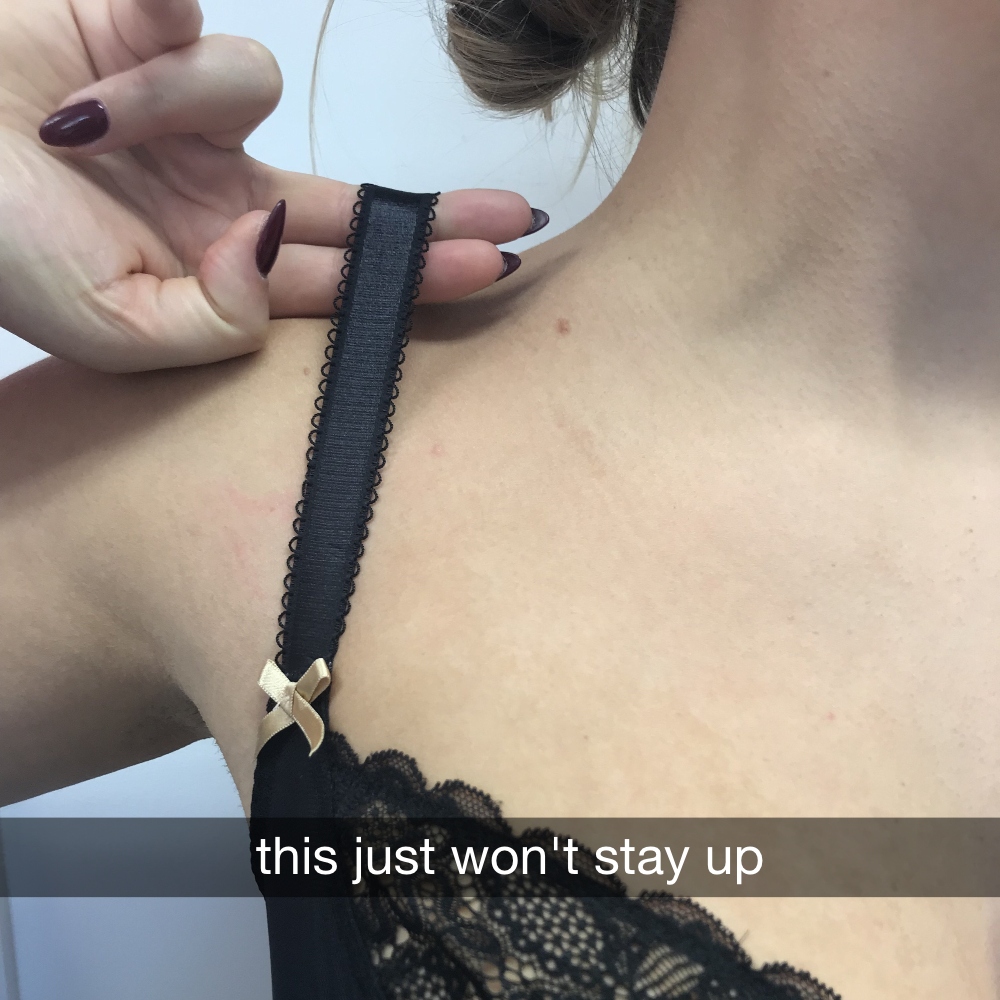
Many people seem to forget that these straps are adjustable so you can just tighten them. Of course, then you can get stuck with the opposite problem — a bra strap digging into your shoulder.
Always Searching For Socks
No matter where we put our dirty socks at the end of the day, they somehow don’t make it back to us in one piece. Even if we place our socks carefully in the laundry basket and wash everything together, we’ll still end up with a random sock.

Then, if you decide to grab an odd set in a rush, you just perpetuate the problem. Soon, you can’t remember having paired socks, and have to buy some new ones.
Sock Fluff Strikes Again
We’ll admit that this picture isn’t exactly pleasant to look at. However, it is a picture of someone’s feet covered in fluff, rather than their feet covered in mud and soot. And we think that helps things.

This snap is showing yet another clothing problem. When you wear new socks (or use a new towel), you’ll end up covered in fluff. Washing items before wearing them gets rid of this problem, but then you miss out on the joy of slipping on new socks.
The Deodorant Dilemma
We’ve seen yellow pit-stains on white shirts so far, but we haven’t even mentioned deodorant marks. This is when you apply deodorant and then somehow it ends up staining your clothing. Even when you’re extra careful, somehow the white powder makes its way onto the exterior of your clothing.

Thankfully, some deodorant companies have developed a no stain formula. Though apparently you can remove these stains by dabbing them with some nylon pantyhose. You heard it here first!
Purely Decorative Drawstrings
We’ve ranted and raved about fake pockets, and we’re going to do just the same for decorative drawstrings. You see, drawstrings are rather useful things. If your shorts are a little too loose, you can pull them nice and tight. If your joggers are looking baggy, you can put them in place by cinching in the waist.
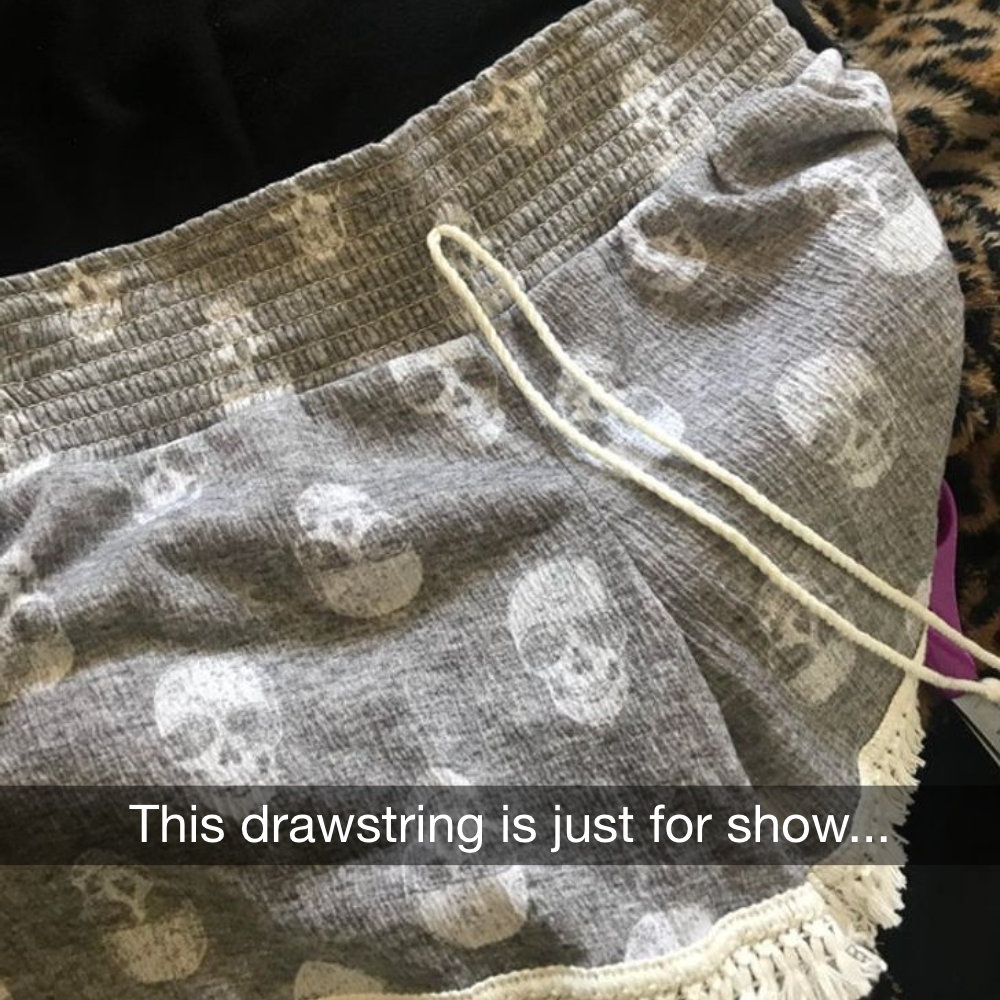
So, why then would manufacturers put fake drawstrings on their clothing? This just reminds us that our clothing is actually missing a feature.
The Clean Clothes Mountain
So far on our list of clothing troubles, we’ve seen a rather impressive floordrobe. Of course, this is when your clothes migrate from the wardrobe, to your body, to the floor. Many floordrobe experts know exactly where each item is, even though it looks like chaos to everyone else.

From the looks of this picture, we’d guess that these clothes are piled on top of a chair. It’s a year’s long problem that we can’t put our clothes away — thank goodness for empty surfaces!
Jewelry That Keeps Spinning
Jewelry is always in fashion; it just depends on what the trends are each season. One persistent problem that’s cropped up over the years is keeping a jewelry clasp where it belongs. Particularly in the cases of necklaces, clasps often shimmy around and hang with whatever’s on the chain.
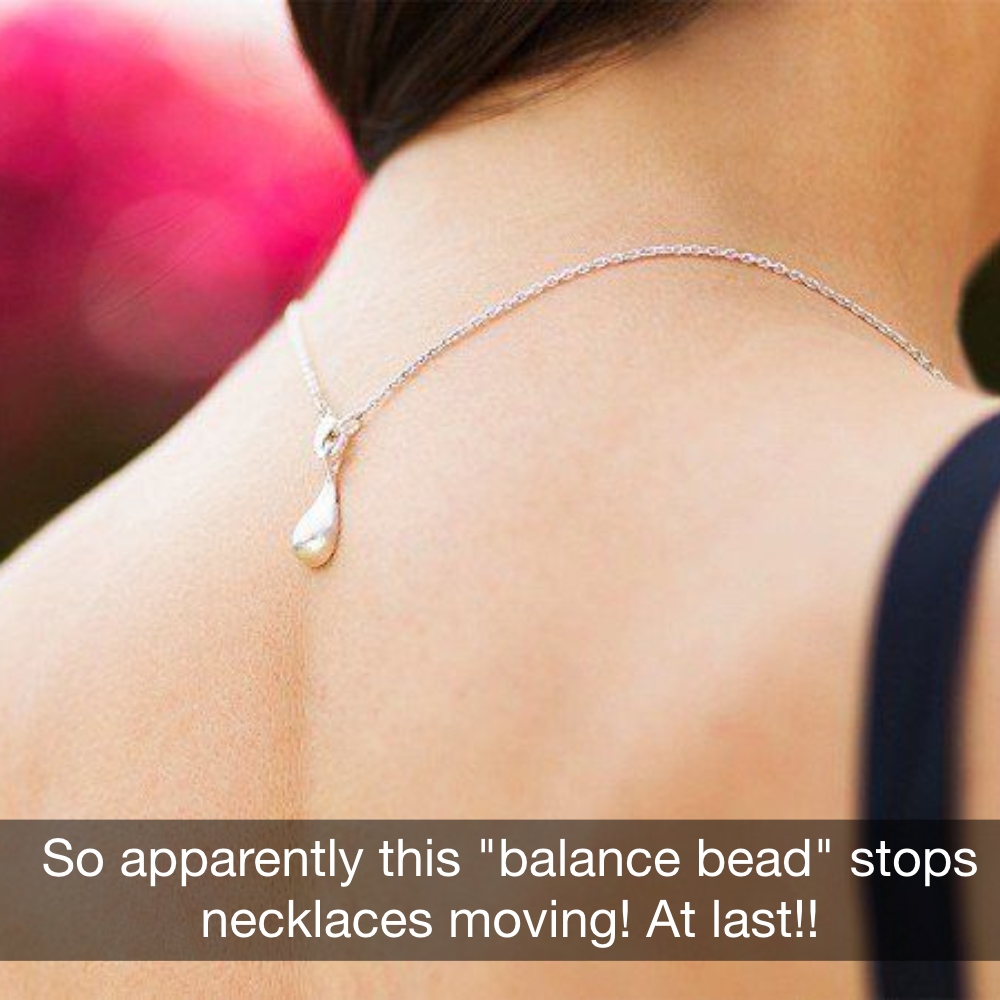
This isn’t the end of the world, it’s just really annoying. Thankfully, now you can buy balance beads that keep the clasp where it belongs — at the nape of your neck.
Taking Off the Tag
We’ve called for the canceling of annoying ribbon loops inside clothing. And now we’re calling for the canceling of these little plastic tags attached to clothing labels. These pesky plastic tags hold paper tags in place, and are a nightmare to remove.

When you firmly pull a label off, it often leaves behind the plastic tag. Then, when you try to firmly pull that out, it can end up causing a fray, or even a small hole. Plus, they dig into our skin!
They Never Make It Easy
While we’re at it, let’s talk about useless store hangers. This example comes without a hook, making it pretty pointless. Stores also produce specific hangers for underwear that are useless once brought home. Obviously, this is a massive waste of plastic — there must be a better way!
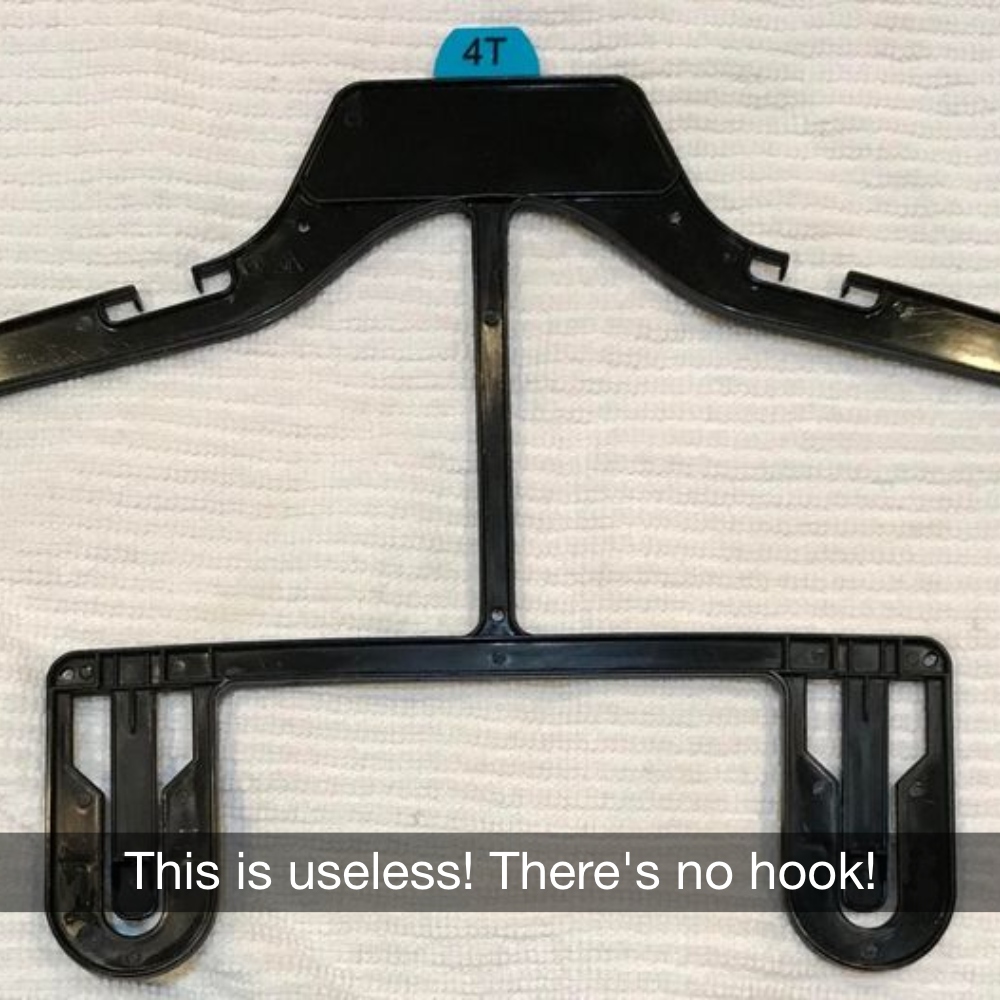
In many countries, clerks now ask if you’d like to take the hanger home. In some cases, this is convenient. However, when the hanger looks like this, it’s a waste of everyone’s time.
Crease Covered Toes
There are various different names for high heels depending on their style. These are high heeled pumps with a pointed toe. For some, they would be stilettos since their heel is pretty high. For others, they would be winkle pickers, named by the 1950s British rock ‘n’ rollers who wore them.
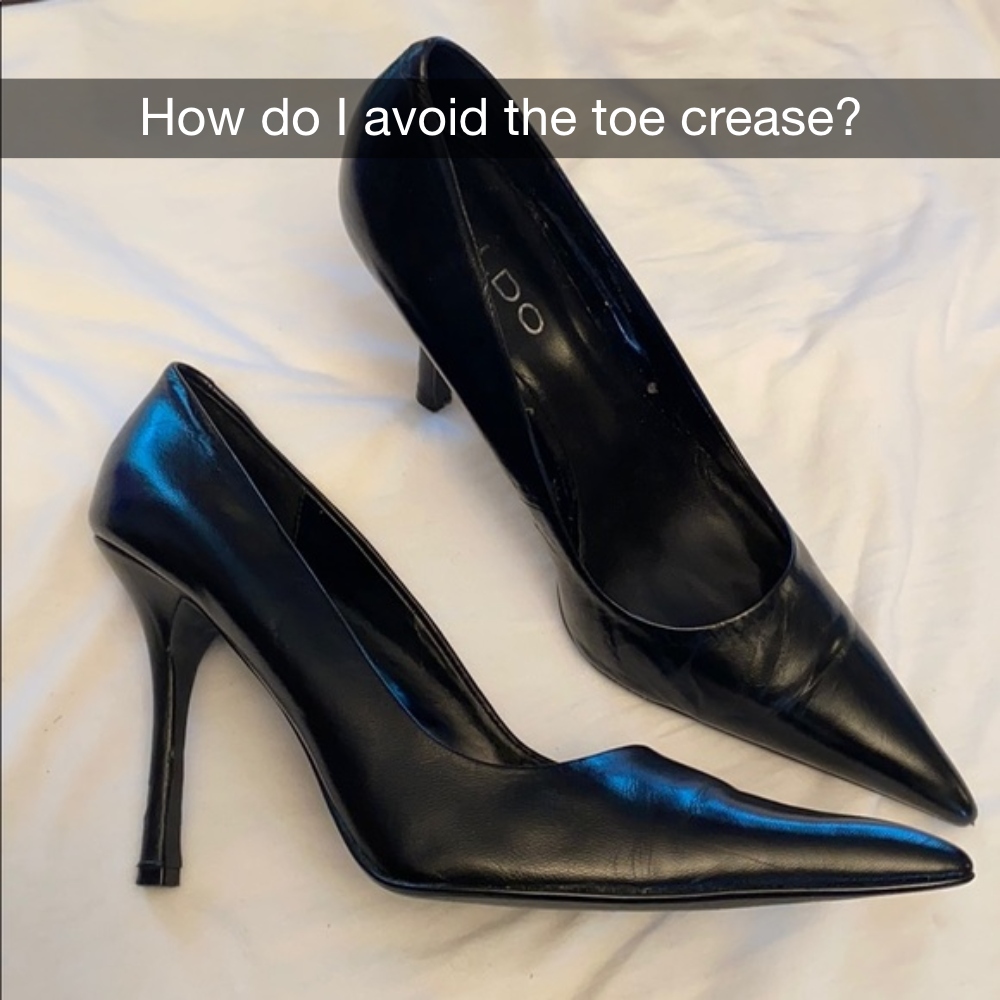
One problem with winkle pickers is that you can end up with a crease across the toe. Depending on how you move your foot, your pointy shoes can end up rather ruined by an ugly mark.
A Truly Terrible Tangle
Washing machines were amazing inventions that massively affected women’s lives when they were first released. Before domestic washing machines, women had to wash clothing by hand, and dry them using punishing tools like a mangle. Now, we’re lucky we can just stuff our clothing in the machine, push a button, and come back later.
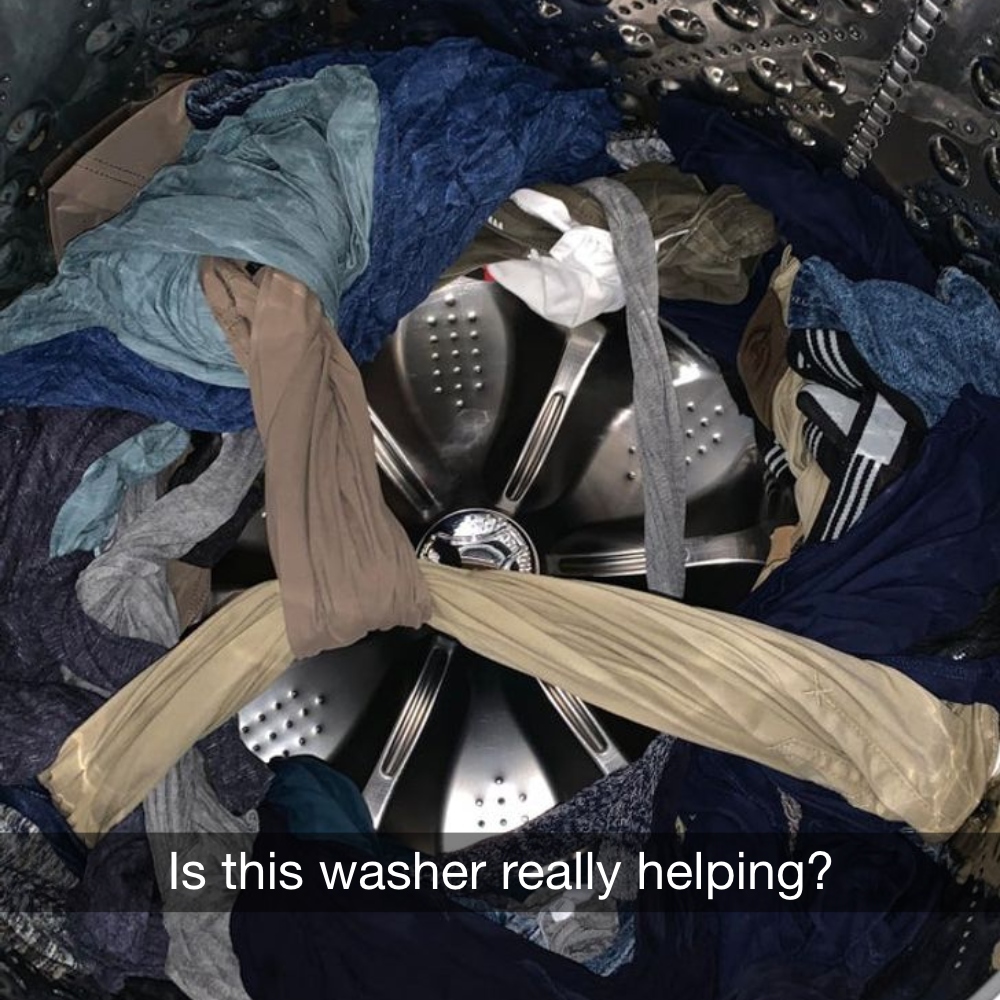
In saying that, modern laundry machines do have some issues. For one, they can tangle all of your clothing into a jumbled mass like this one.
Rain Ruined Suede
Generally, when you buy something made of suede, you should also buy some suede protector. This is something most people think of when they buy suede, but don’t actually follow through on. Come on! We have better things to do than buy suede protector!
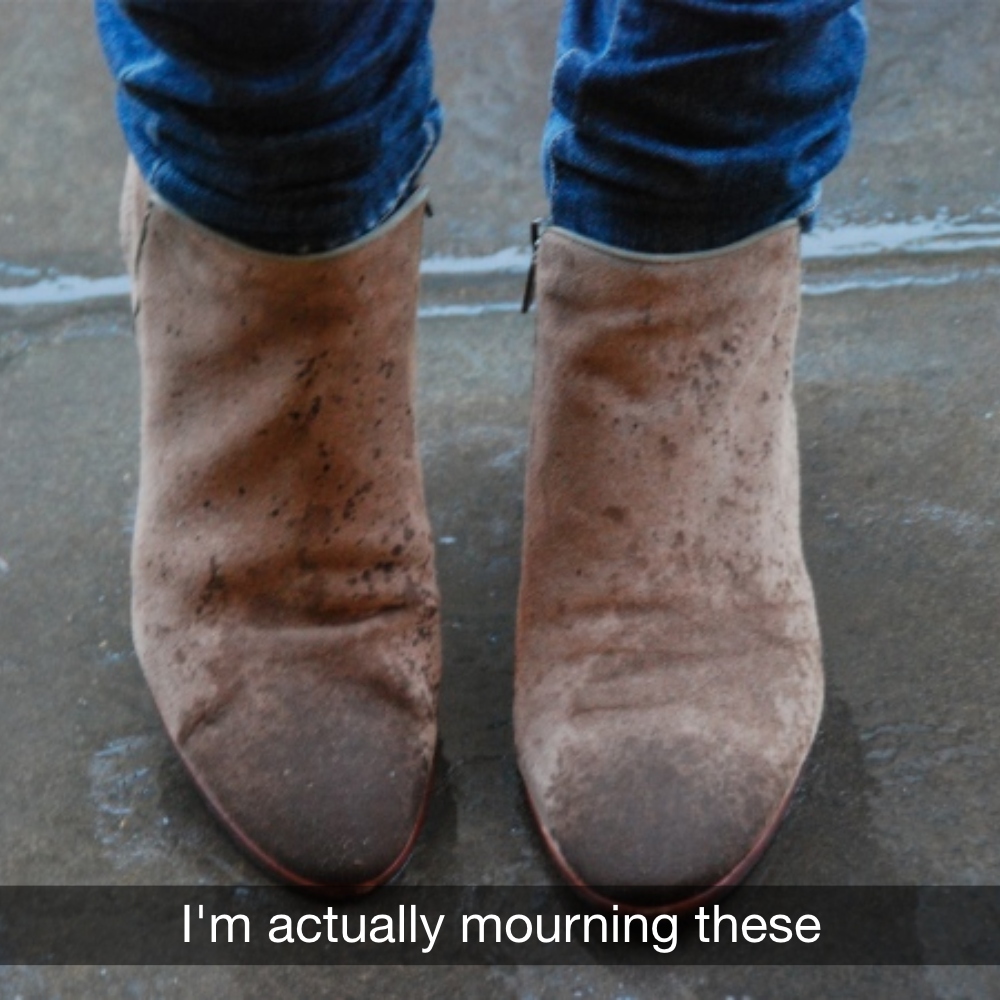
Sadly, this negligence results in some sad looking suede. Because the fabric is leather rubbed until it’s velvety, this same material can be damaged by water. Thankfully, it can be fixed if you’re quick!
The Curse of Pantyhose
For some reason or another, pantyhose are a normal item of clothing that we’re expected to wear. We get why they’re necessary, but they seem practically disposable because they rip so often. All it takes is a long finger nail or a skirt zipper and suddenly your pantyhose are useless.
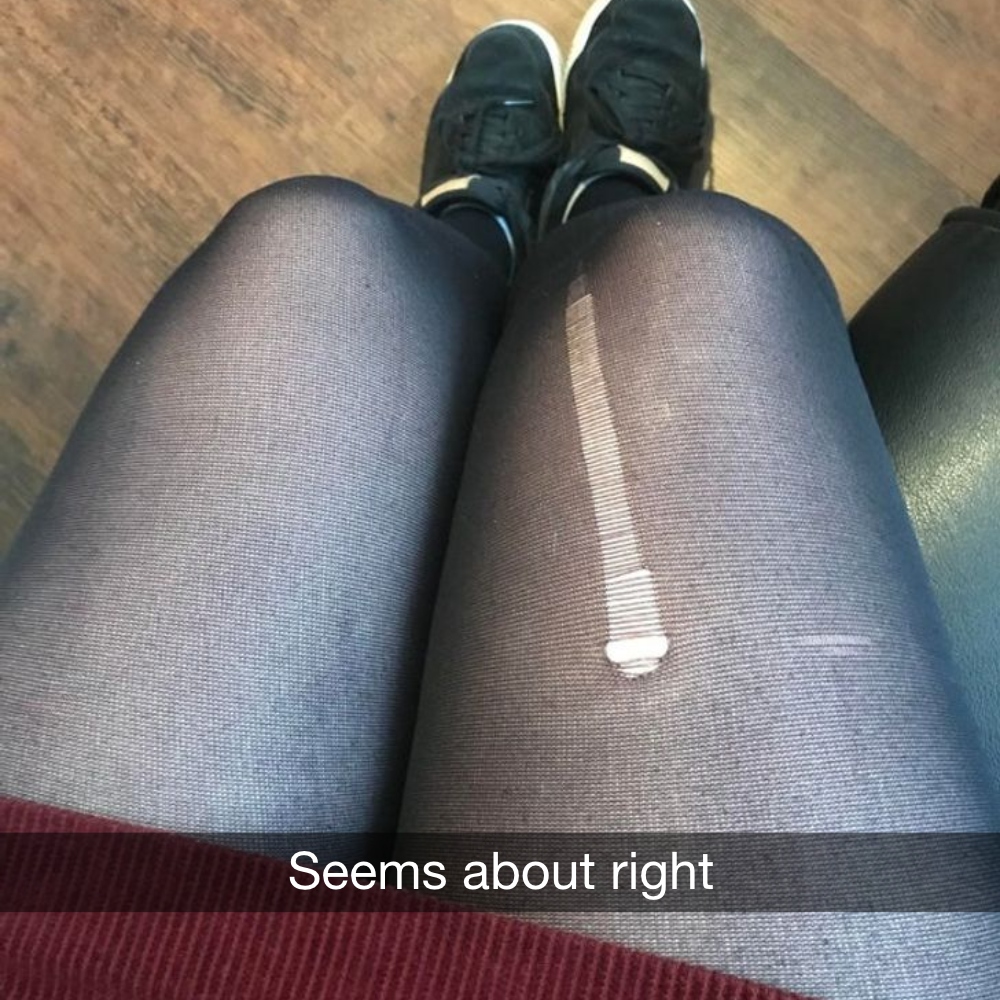
This means that when you wear pantyhose it only makes sense to carry another pair with you. That way, you can slip into a new set when you inevitably ruin the first.
Cracking the Dryer Code
We like to think that if we designed the clothes dryer, we’d come up with a better name for the settings. Look, we know that sounds arrogant, but hear us out. You see, we’d like it if we could set the dryer to a certain temperature.

You could start low, and then gradually increase when necessary. Instead, we’re faced with vague terms like “cupboard dry,” “extra dry,” and “damp dry.” Surely dry is dry is dry, right?
I’m Going Green
It’s time to debunk a popular myth. Most people believe that wearing cheap jewelry can turn your skin green. This is basically the case, but it’s actually because of a chemical reaction that happens between your skin and the metal in the jewelry.
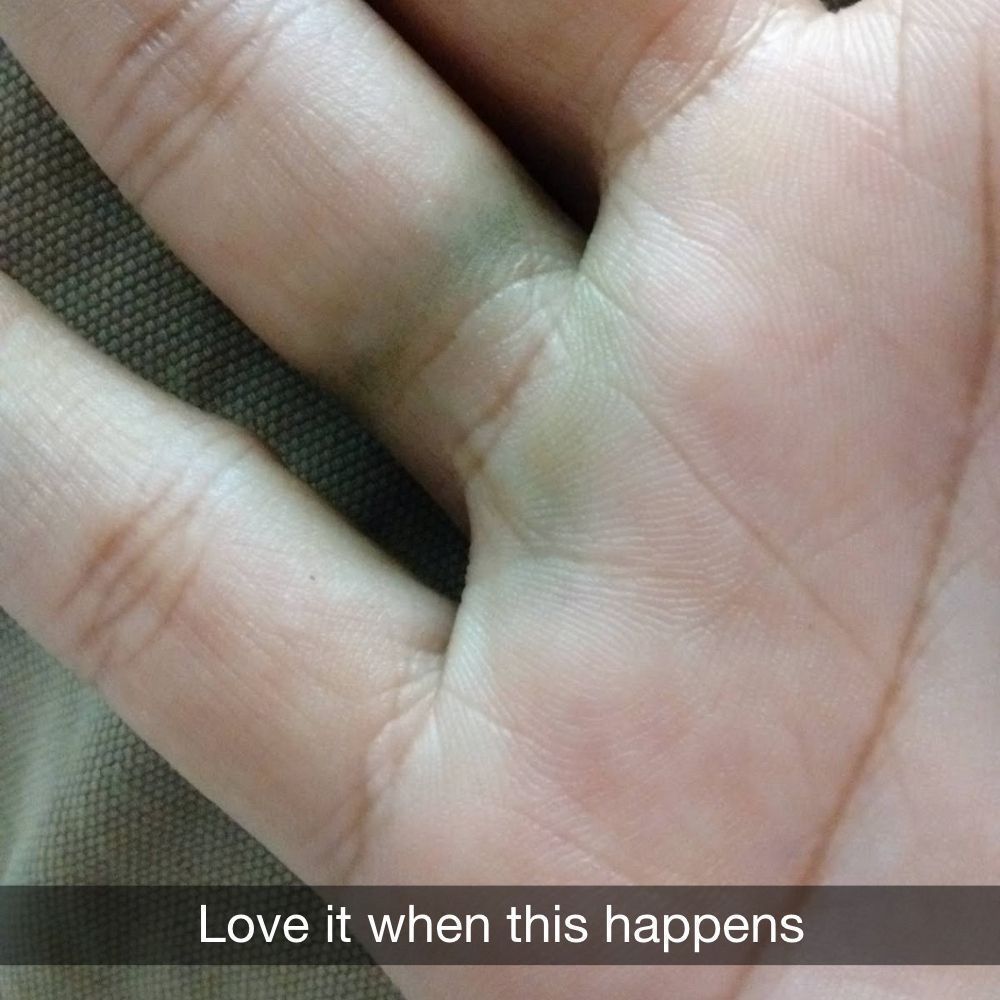
So, if you’re wearing jewelry that’s made from copper, oxidation happens, and that makes your skin go green. This can happen with other metals too, and is usually caused by skin acids or body lotions. This isn’t the same as an allergic reaction.
What Is That?
We understand why labels are necessary. Really, we do. We know that they contain important information about washing. But maybe that could go on the internet? After all, does anyone really peer at those tiny symbols before stuffing their jeans in the laundry?
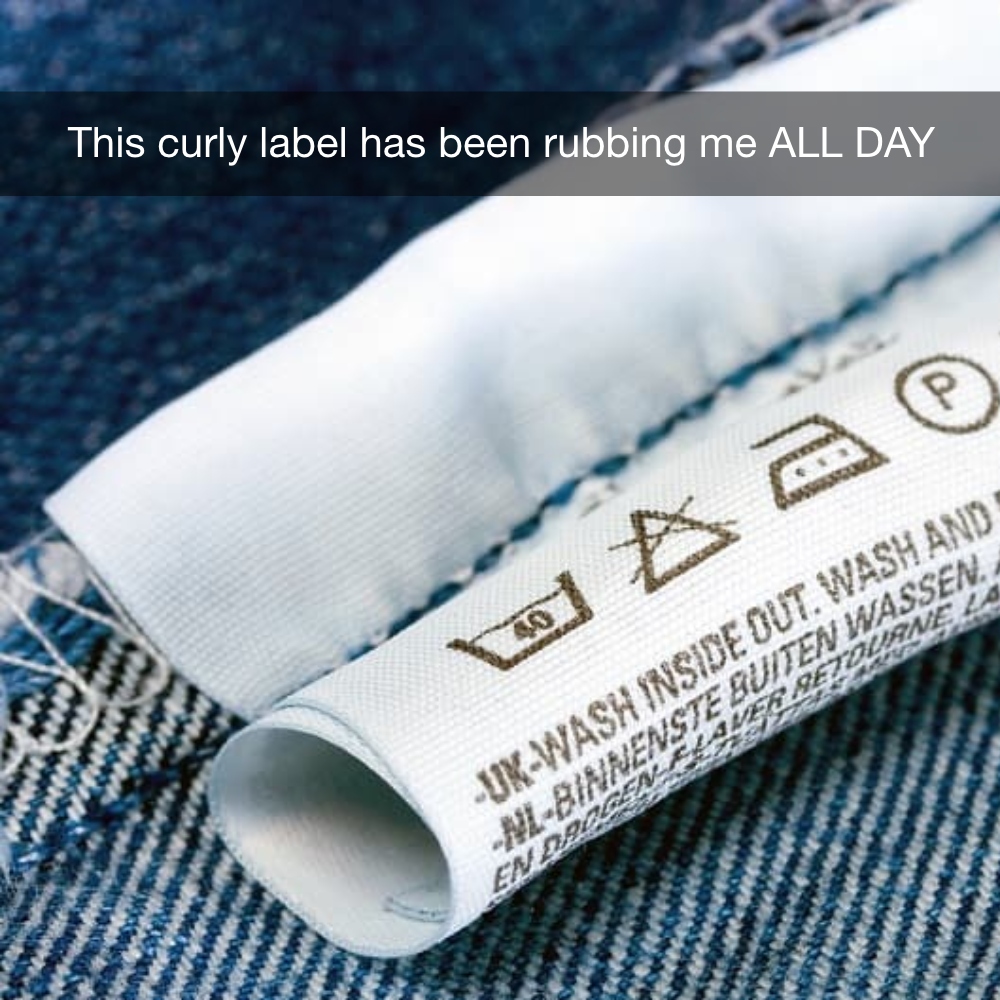
Some clothing labels can be very irritating. They can rub the inside of your leg, arm or back. Or, they can hang outside of your clothes making you look like a fool! We say banish them.
Health and Safety Violation
Here’s a piece of clothing that’s managed to injure the person that owns out. We’d bet this nice new shirt came from a fancy store and was folded up along neat creases. We’d guess that these pins were used to keep the shirt in place, and someone forgot to remove them at the register.
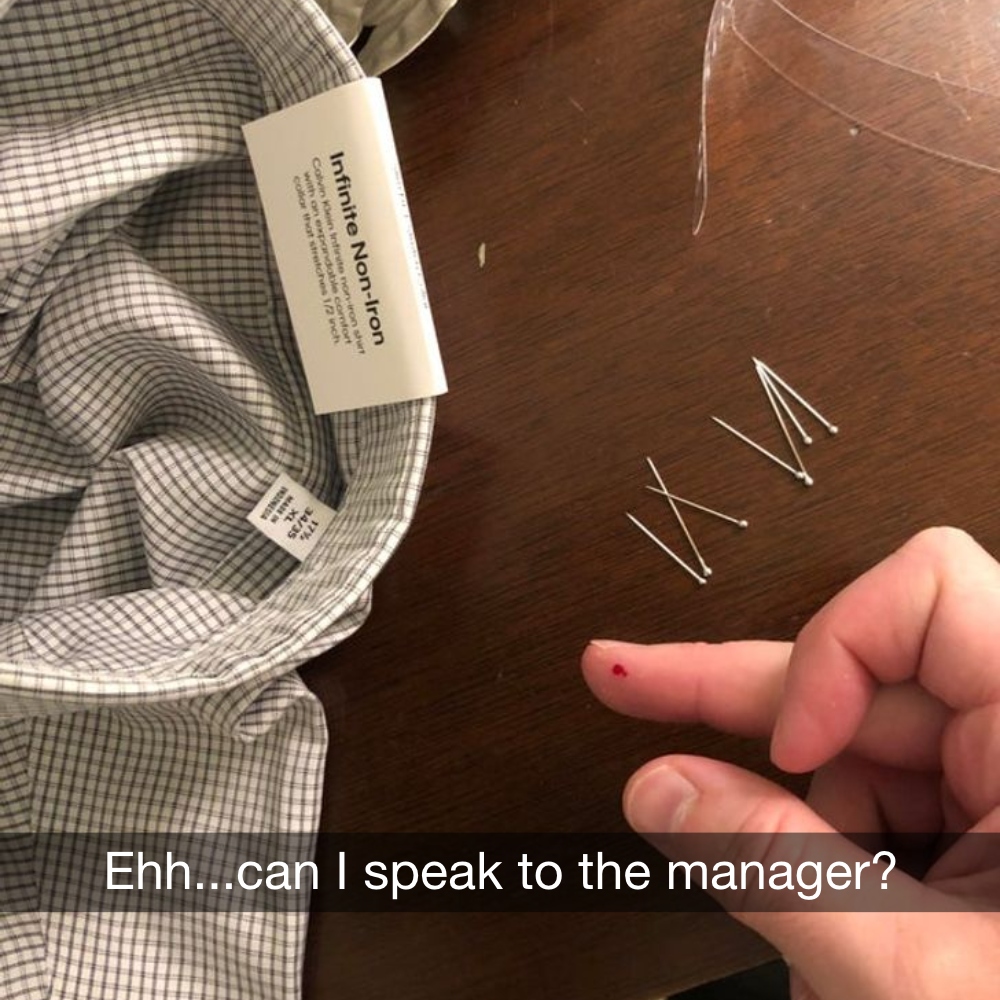
Or, maybe this person tried on their new shirt and had it tailored to fit them. Then, they left with a new shirt packed full of pins. Sounds painful!
Stuck For Life
Zippers are pretty great. We’d take them over Velcro any day, and they’re on par with buttons too. Although, once a zipper loses its zip, it usually becomes pretty redundant. In these situations, you’re stuck pointlessly tugging at a zipper that will never zip again.

Other times, broken zippers will open and close, but only along one side of its zig-zag tracks. In these cases, the zipper is mocking us, gliding up and down knowing its zipping days are gone.
Slogan Overload, Stop Slogans
We’ve all been there over the past few years. We’re in a store, and we’re casually looking through some t-shirts. Suddenly, we see something we like in a color we love, and we reach to take it from the rail.

Only then do we realize that our cute new staple tee is covered in a brash slogan that means nothing. Enough already! We’ll take slogans when you have something to say, but otherwise let’s just stick to plain tees.
Well, That Socks…
Whether you’re a laundry master or not, we’ve all experienced this exact situation at least once in our lives. You’ve just finished a load of wash that you now want to throw in the dryer.
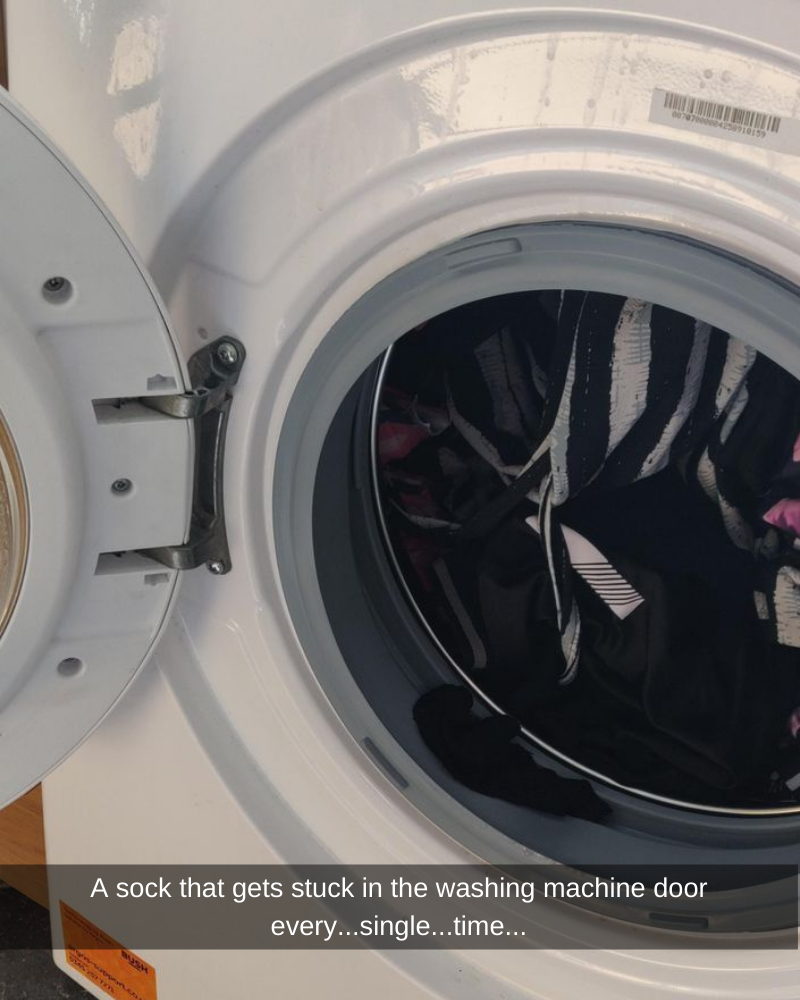
When you open the door to the washing machine, though, you notice one sock hanging out by its lonesome. You pull the sock out and, of course, it’s sopping wet. While it’s not the end of the world, it can put quite a damp(er) on your day. Ha, get it?
Same Same, But Different
Drying racks are a great solution for those that don’t have access to a dryer. Still, there’s a certain method that you should follow when it comes to hanging your clothes on the rack.

Although this particular technique isn’t necessarily wrong — as the clothes will definitely dry — one t-shirt takes up an unnecessary amount of room that could be used to hang other articles of clothing or linens. If you live with someone, this could be a potential issue considering that you’ll have to share the rack. Well, unless you each buy your own, that is.
If Only
Man, if only this drawer was one inch wider! We’ve all been here, although we have to admit that we never thought of the most obvious solution — to put the shorts away vertically rather than horizontally.
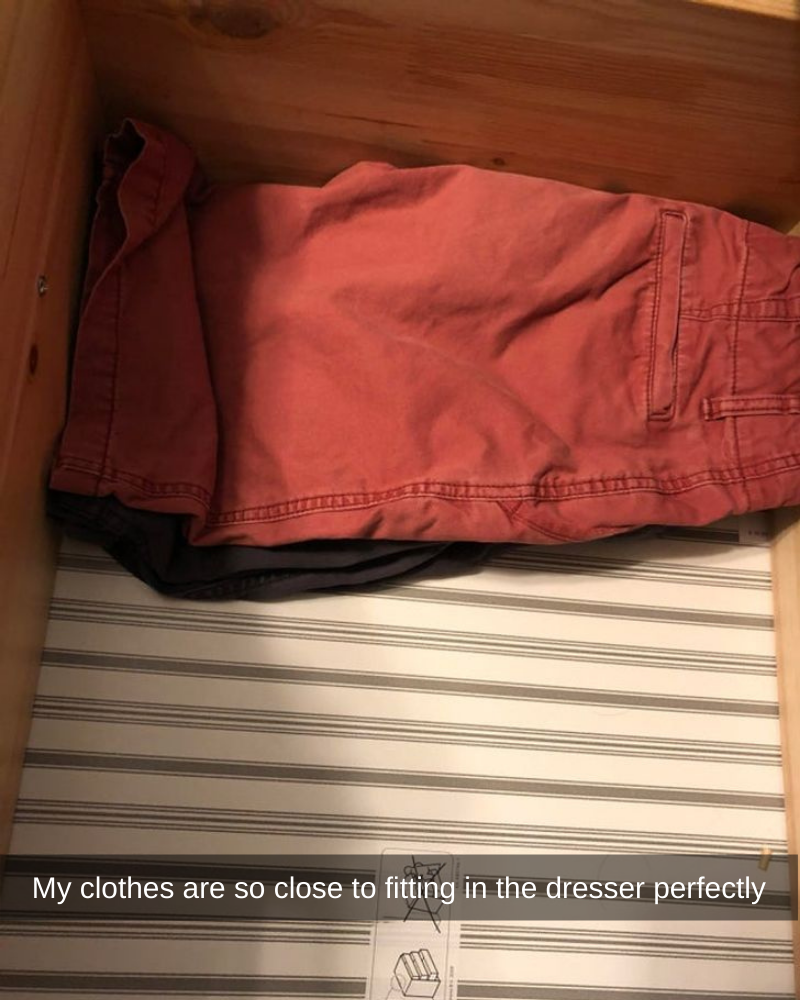
That way, there’s no need to worry about creases! Perhaps this OP already thought of that but was just truly hoping that her dresser would be big enough. Alas, we can’t always get what we want!
The Worst Kind of Customers
Ugh! Just because “the customer is always right” doesn’t mean that they should be able to get away with something like this. Working in retail is hard enough as it is but having to deal with inconsiderate customers makes the job that much more challenging.
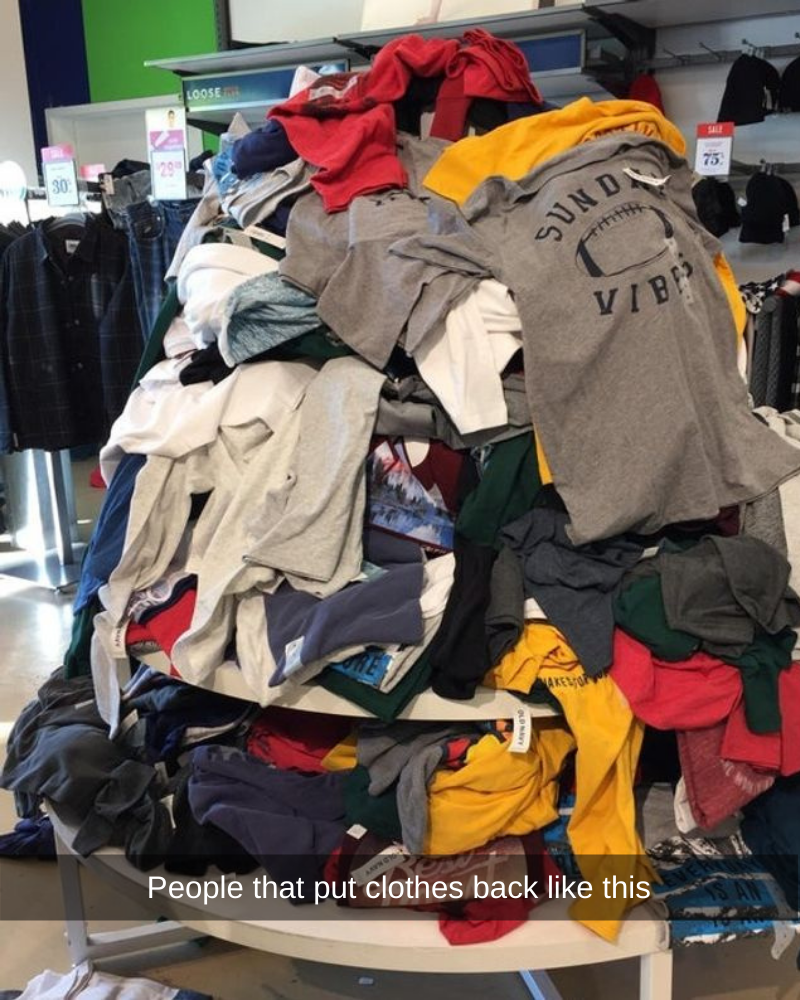
Take this poor OP, for example. They had just finished organizing this display only to return to it five minutes later and find it like this. What is wrong with people?!
A Woman’s Daily Struggle
This isn’t the first time that we’ve seen or spoken about this kind of issue, and it’s certainly not the last! We’re not entirely sure why manufacturers seem to have trouble understanding that we women also use pockets.
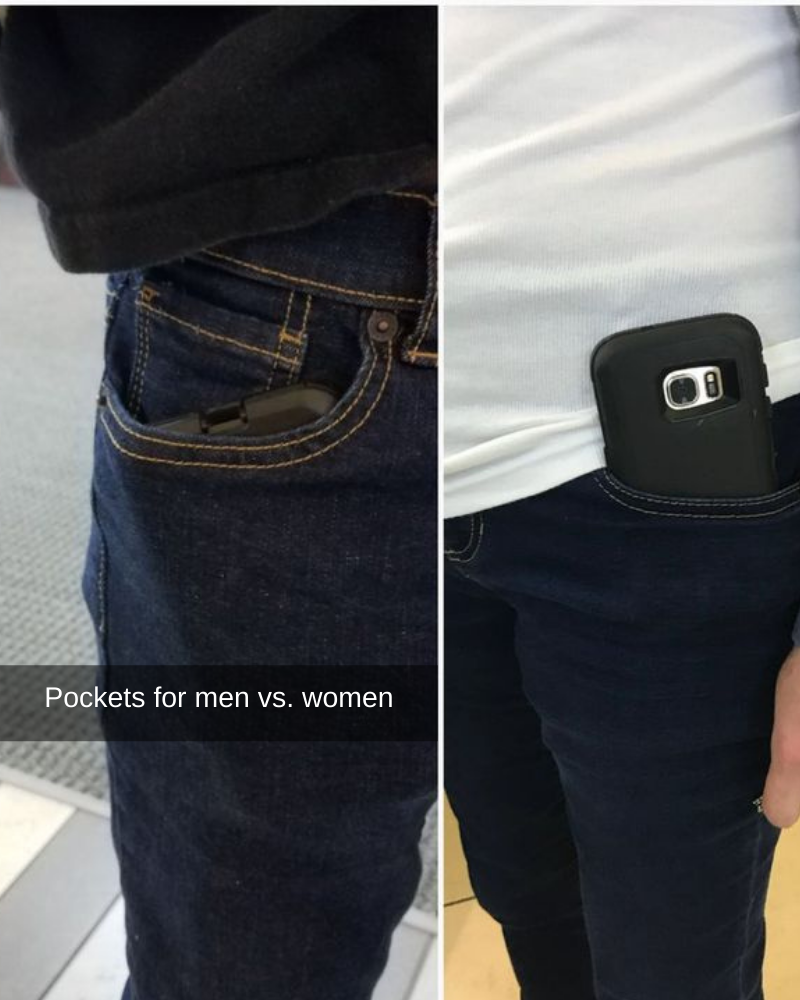
With that in mind, it would be highly appreciated if clothing companies began creating more functional pockets for the ladies of the world. After all, we’d like to be able to fit more in our pockets than just the tip of our finger.
Something’s Off
This clothing mishap may not be totally apparent at first glance but upon closer inspection, you should notice a slight discrepancy. While the label says “The Essential V-Neck,” this t-shirt actually features a crew neckline.
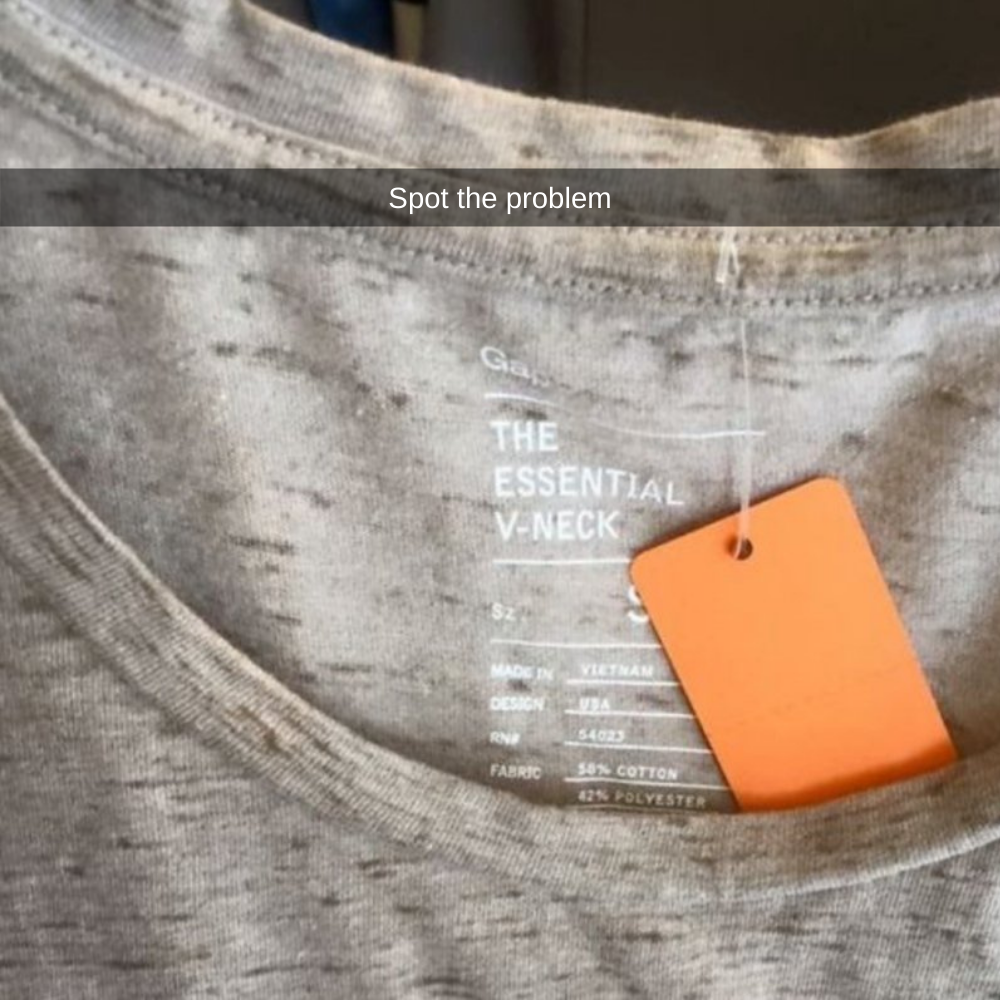
Not the biggest deal, right? In fact, this could easily be Gap’s way of playing a joke on their customers. That’s what we’d like to think, at least — it would be pretty funny if they decided to do that.
The Newest Fad
There are just some mornings that you wake up totally out of it, even if you got a good night’s sleep. When you do wake up super groggy, it may take you more time than usual to complete certain tasks — from brushing your teeth to getting dressed.

This OP did everything she was supposed to do when she got out of bed but suffered from a brain fart along the way. Let’s just hope this “look” doesn’t become a fad.
Perfectly Imperfect
We’ve already seen Gap mislabel their t-shirts so, naturally, we have to check out what kind of tricks Old Navy has up its so-called symmetrical sleeves. The woman here was stoked about wearing her newly-purchased Old Navy cardigan.

Unfortunately, that excitement was short-lived. Once she tried it on and realized just how lopsided it was, this Snapchat user couldn’t help but call Old Navy out. Our only question is, why didn’t she try the sweater on at the store before buying it?
Gone With the Wind
Every woman knows this struggle all too well. You’ve just purchased yourself a new dress to spice up your wardrobe and you decide to wear it to work. Not a problem, right? Wrong! If it’s even slightly breezy out, you run the risk of flashing total strangers.
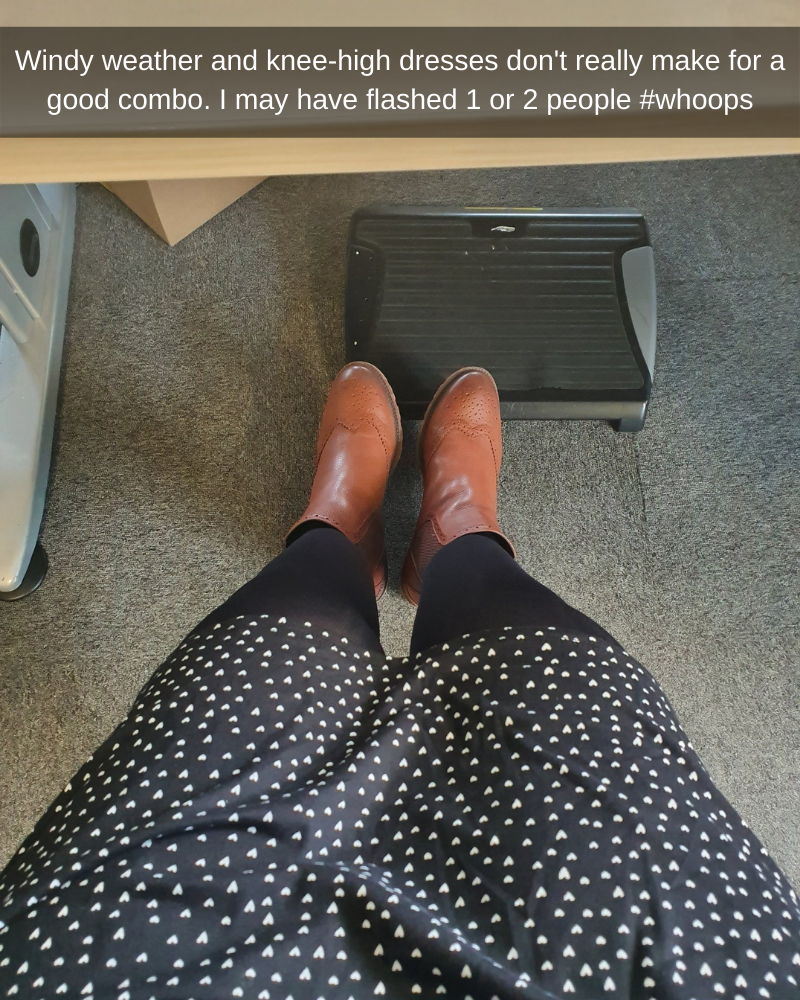
Sure — that doesn’t seem like a huge deal considering that you’ll probably never see them again. But, if you have any sense, you’ll still wear stockings or tights underneath that dress, as this gal did.
A Sizing Mishap
Let’s be real — this had to have been a pretty frustrating moment. After all, imagine that you ordered this dress online and had to wait weeks for it to arrive. When it finally does, you open the package only to discover that the item isn’t even in the right size.
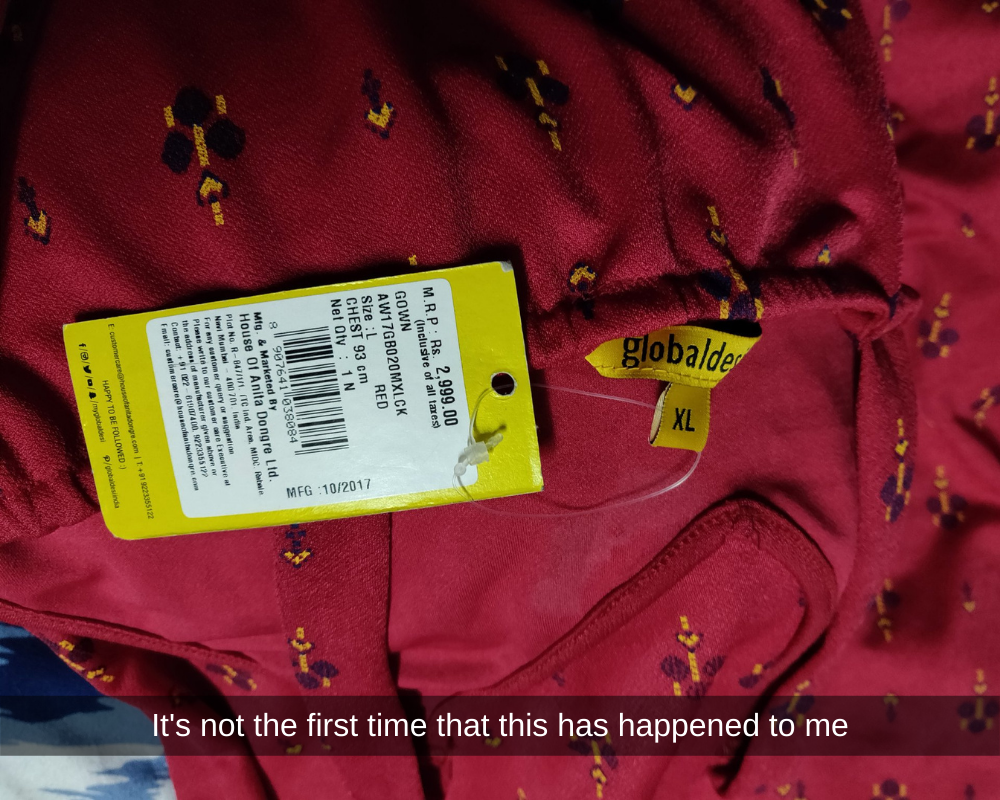
Like the other clothing troubles on this list, it’s not the end of the world by any means. Still, when it keeps happening to you over and over again, something’s gotta give.
Spring Cleaning
If you’re anything like us, then you spend a day every year getting rid of or donating clothes that you no longer wear or want. Once you’ve done that, you then set aside some time to organize the clothes that you did hold onto.
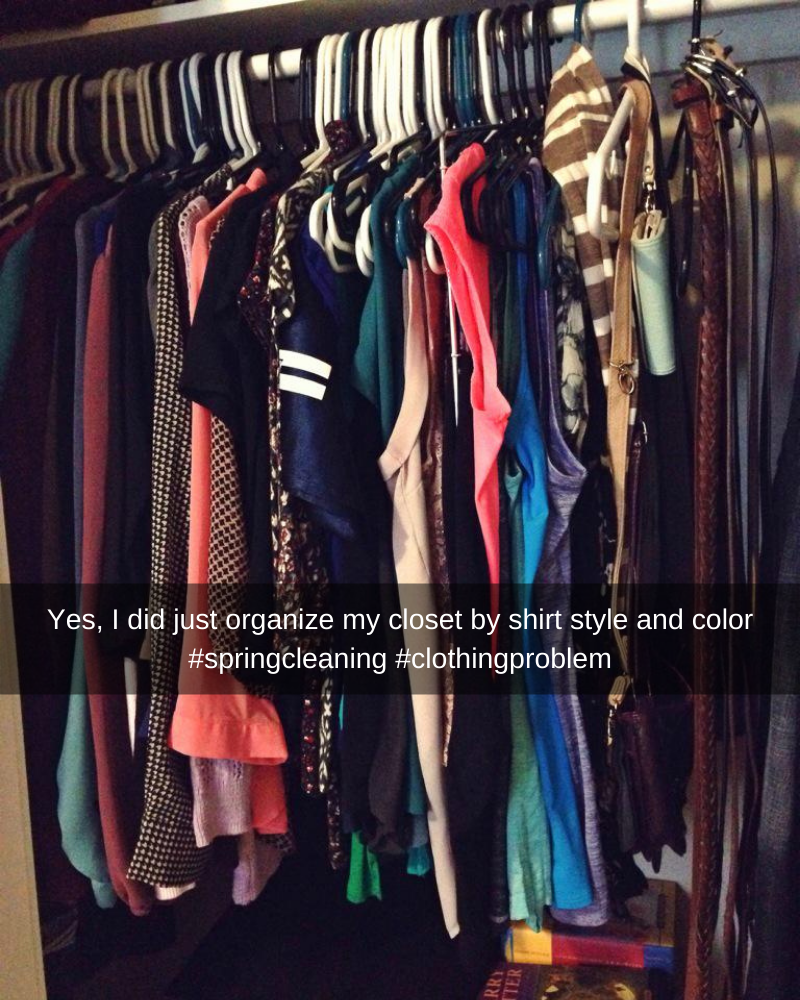
That, our friends, is what we call a successful spring cleaning — even if you’re not as meticulous as this OP. After all, they arranged their clothes by style and color. Not too shabby…
Is it Half Price?
Fashion trends and fads constantly change. Ultimately, people are influenced by popular culture and everything that comes with it such as actors, musicians, athletes, influencers, and even royalty. So, it makes sense as to why fashion fluctuates so much.

However, it seems like — as time has gone on — crop tops are getting tinier and tinier. Ladies went from showing off a bit of their tummy to totally exposing their mid-drift. Now, though, they might as well wear no shirt at all. Why do clothing manufacturers think we all want to dress like Barbie?!
My Eyes!
Ah, our eyes! First and foremost, sir, we hate to break it to you but your wife is totally right. Not only is this outfit completely and utterly unacceptable, but it’s also slightly embarrassing for your poor partner.

She obviously loves you for you — which is absolutely beautiful — but why would she want to walk around with you when you decided to stick stripes and plaid together?! Too…many…patterns!
Oh, the Iron(y)
To be honest, we don’t think that a slightly creased or wrinkled skirt will make or break your chances of landing a job. Still, we do understand why this gal was a bit apprehensive about her interview.

After all, you want to do the very best you can during an interview — and, in order to do your very best, you have to feel that way too! That doesn’t mean, though, that you should lose hope if your outfit does have a few crinkles.
Fully Moved In
It has to be pretty inconvenient having to live out of a box because you don’t have enough storage space. We’ve all heard the expression, “Living out of boxes,” which refers to those that have moved into a new place but have yet to unpack, meaning that their possessions are still packed away.

In the case of this OP, they’ve been fully moved in for quite some time now — to the point that they’re fully unpacked… well, except for one box.
Covered in Cat Hair
Cat lovers know that the downside of enjoying feline company is cat hair. You see, when you have a kitty, they tend to rub themselves all over you. Or, if they aren’t the cuddling type, they’ll rub themselves all over your clothing instead. No matter where it is.

So, cat owners can be having a great time and suddenly realize that they’re coated head to toe in cat hair. And it turns out other people aren’t really into that…
Totally Transparent Tees
Women get the raw end of the deal pretty often. After all, we’re supposed to be fashion’s main consumers, so why can’t we get a proper t-shirt? Even when women go to high end stores, its common to try on a shirt and find that it’s actually see-through.

This means women have to buy, not just a t-shirt, but a slip, bodysuit or camisole to go underneath it. That way, we have to spend even more money. It’s a scam!
No Pockets For You Lady!
Last but not least, we turn to the dangerous lack of inside pockets in women’s jackets. This is just like the fake pockets problem, and the decorative drawstring problem. Essentially, designers like women to wear pretty things, but not to have practical things.

Well, we’ve got news for them — fashion can be both pretty and practical. While we know that women traditionally carry purses, we think we deserve the option of a nice inside blazer pocket. Get it sorted!
The Hard Truth
Alright, let’s start off with something most of us can get behind. When an item is labeled “dry clean only,” we’re pretty confident it will never be washed. That might sound a little gross, but actually, it’s just realistic.

You see, if an item can only be dry cleaned, then we’re much more likely to just dab stains off with a wet cloth. Who has the time to take their clothing to a dry cleaner? We’re not movie characters!
Dryer Destroyed Clothes
Sure, sure — clothes dryers are great inventions, but only if they’re used properly. For lots of us, putting our clothes in the dryer is a gamble, and we don’t know what we’ll get back. While we love the idea of warm, gently tumbled clothing, we don’t love the reality of shrunken, itchy items.
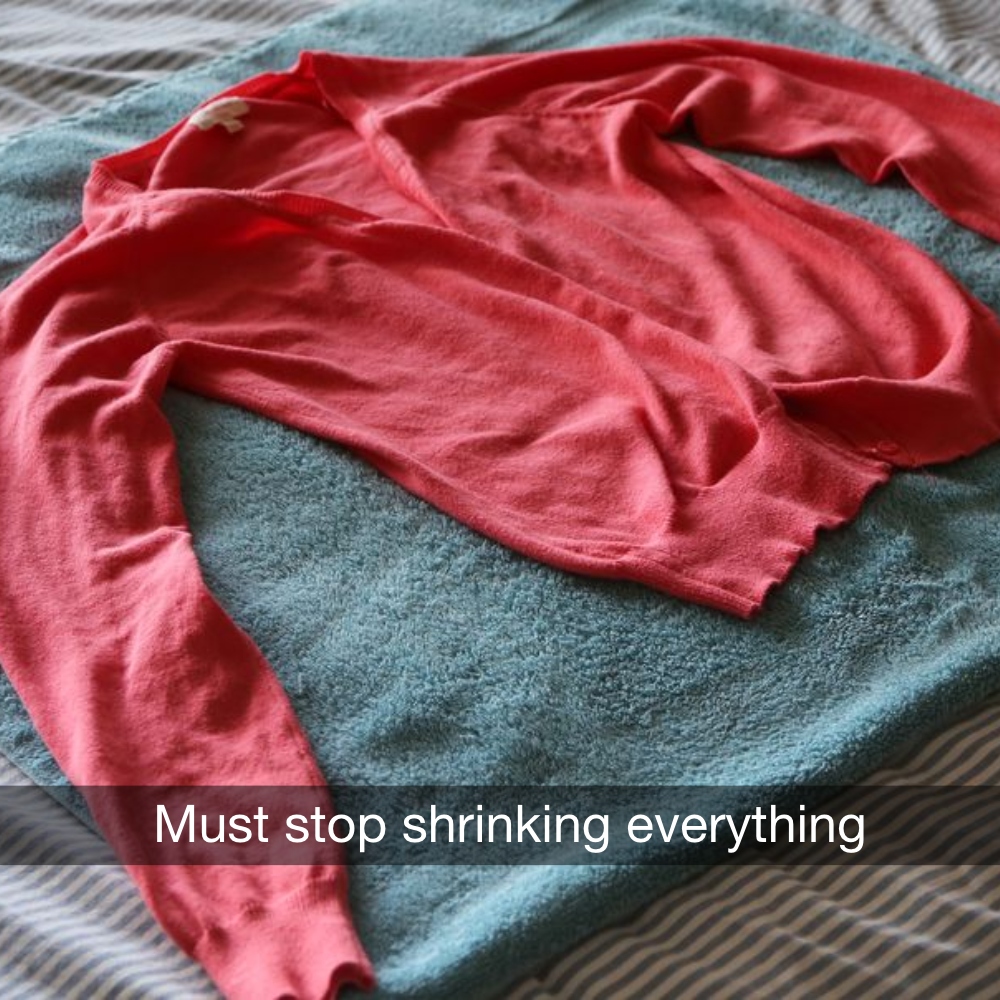
It seems that’s different materials react differently in the dryer. Because of this, some fabrics shrink after being tossed around in a hot, enclosed area.
As much as we love fashion — and trust us, we do — we can’t deny that clothing comes with its own set of problems. There are all sorts of ways our clothing can make us feel uncomfortable, frustrated, or impatient. It’s too big, it’s too small, it’s too tight, it’s too loose! Plus, even tried and tested items that we love can end up turning their backs on us. Join us as we take a look at the clothing troubles that all of us can understand.